Chicken Katsu is a classic Japanese home-cooked dish served with tonkatsu sauce and a side of shredded cabbage salad. These tender and crispy panko-breaded cutlets are surprisingly easy to make, even on a busy weeknight! They also freeze well and make for a delicious meal-prep item.
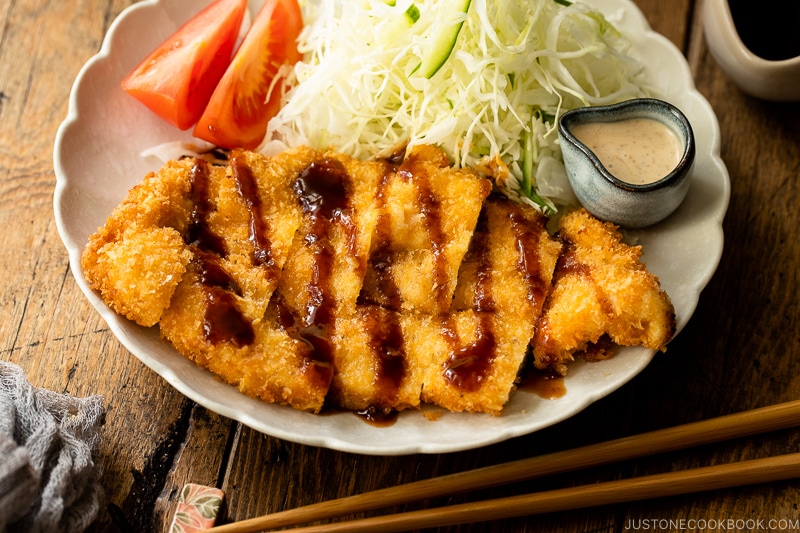
Servings: 2
Ingredients
- ▢ 1 piece boneless, skinless chicken breast (9.5 oz or 270 g for two servings; you can also use the same weight of chicken thighs or tenders)
- ▢ ½ tsp kosher salt (Diamond Crystal; use half for table salt)
- ▢ ⅛ tsp freshly ground black pepper
- ▢ 1 large egg (50 g each w/o shell)
- ▢ ½ Tbsp neutral-flavored oil (vegetable, rice bran, canola, etc.) (for the egg)
- ▢ 3 Tbsp all-purpose flour (plain flour)
- ▢ 1 cup panko (Japanese breadcrumbs)
- ▢ 3 cups neutral-flavored oil (vegetable, rice bran, canola, etc.) (for deep-frying; you should have 1½ inches (3.8 cm) of oil in the pot)
For Serving
- ▢ tonkatsu sauce (for drizzling over the chicken cutlet; you can also make my Homemade Tonkatsu Sauce)
- ▢ shredded cabbage (optional)
- ▢ Japanese Sesame Dressing (optional)
- ▢ tomato (optional)
Japanese Ingredient Substitution: If you want substitutes for Japanese condiments and ingredients, click here.
Instructions
- Gather all the ingredients.
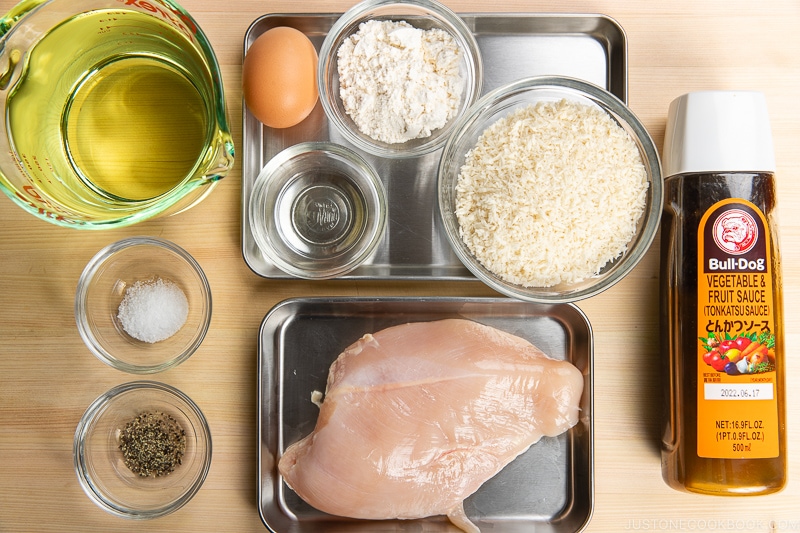
To Butterfly the Chicken
- It’s important to butterfly the chicken breast so the meat will be thinner and cook faster (more about it on the blog). To butterfly the chicken breast, split it horizontally from the side, stopping before you cut all the way through it, and open it like a book. When you open the breast, the two sides will mirror each other, resembling a butterfly (see how I do it in my video). Here, I’d like to show you how to butterfly the chicken using the Japanese cutting technique called Kannon biraki (観音開き). With a sharp knife, score the middle of the chicken breast from the top about halfway through the thickness of the breast; do not cut completely through.
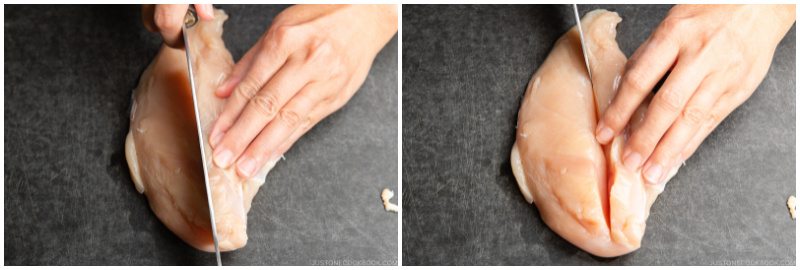
- Then, turn the knife parallel to the cutting board and slice the chicken from the center toward the left side (or the right side, if you’re left-handed) to make it evenly thin. Stop before you cut all the way through it, and open it like a book. Imagine we’re creating a French door here.
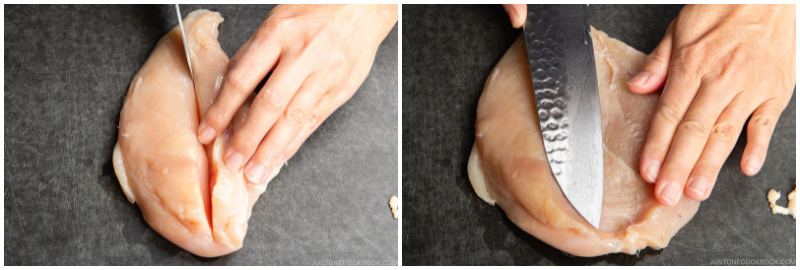
- Turn the chicken 180 degrees and butterfly the second side from the center toward the left, creating another “door.”
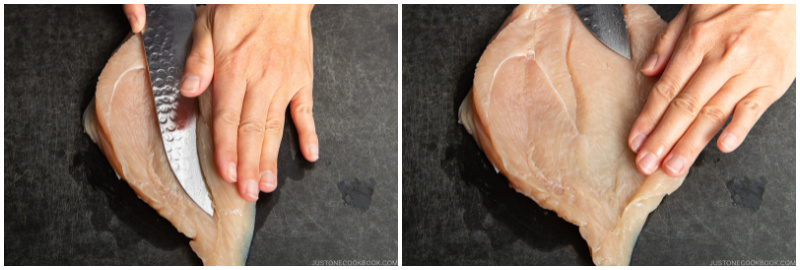
- Cut the chicken in half down the center. Now you have two pieces.
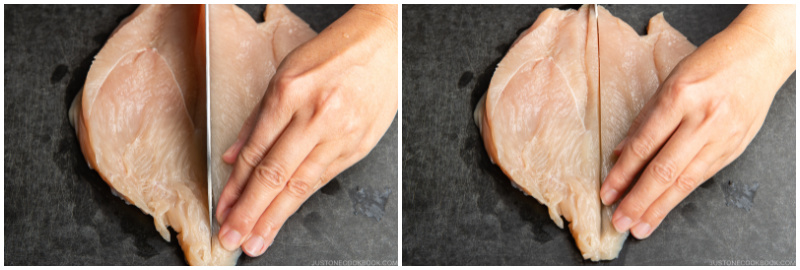
- With a meat mallet or the back of the knife, pound the chicken to an even thickness, about ¼ to ½ inch (6 mm to 1.3 cm).
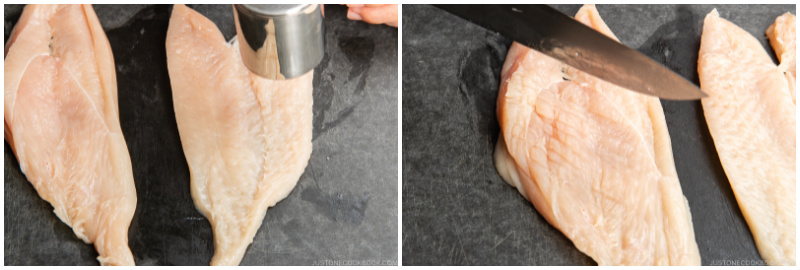
- Season both sides of the chicken with salt and pepper.
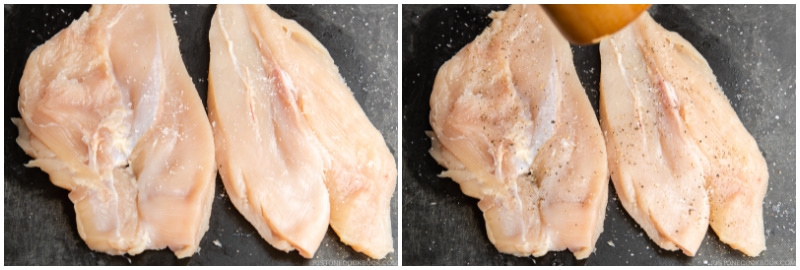
To Bread the Chicken
- Add the oil to a medium-size, heavy-bottomed pot (I use a Staub 2.75 QT Dutch oven, 11 inches in diameter). The oil should be 1½ inches (3.8 cm) deep (you can dip a chopstick in the oil to measure). If you use a large pot, you will need to add more oil to get it 1½ inches deep. Start heating the oil to 340ºF (170ºC) over medium-low heat (or low heat, if you need more time to bread the chicken). Prepare three bowls/trays: One with flour, one with panko, and one with an egg.
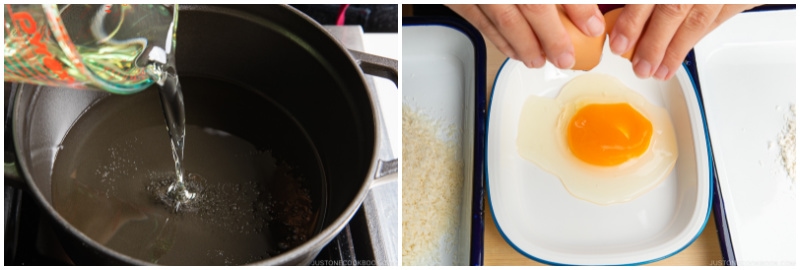
- Add the oil to the egg and whisk it all together.
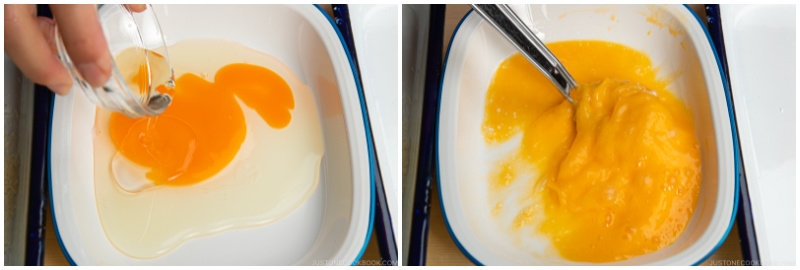
- Coat the chicken with the flour and shake off any excess. Then coat it with the beaten egg.
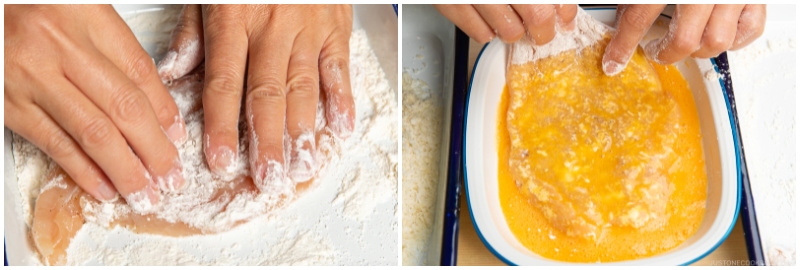
- Finally, coat the chicken with the panko, pressing the panko into the cutlet so that it adheres well. Remove any excess.
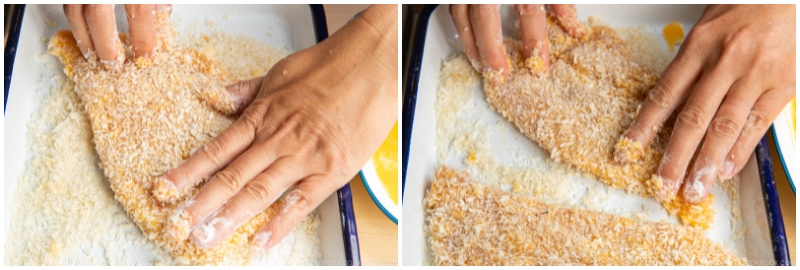
To Deep-Fry
- If you are new to deep-frying, read my How to Deep Fry Food page and get an instant-read thermometer to check the temperature of the oil. Heat the oil to 340ºF (170ºC). I use medium heat throughout deep-frying, but you may need to increase/decrease the heat based on your oil temperature.
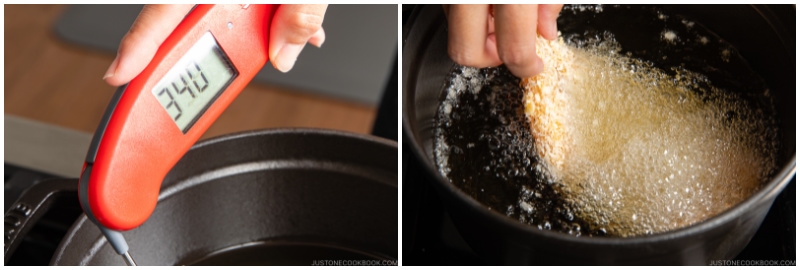
- Fry one piece at a time. Do not overcrowd the pot; remember, your ingredients should take up no more than about half of the oil surface area at any one time. If you add too much food at once, the temperature of the oil will drop quickly and the chicken will absorb too much oil. For chicken katsu, you will deep-fry for a total of 3 minutes, turning the chicken once at the halfway point.
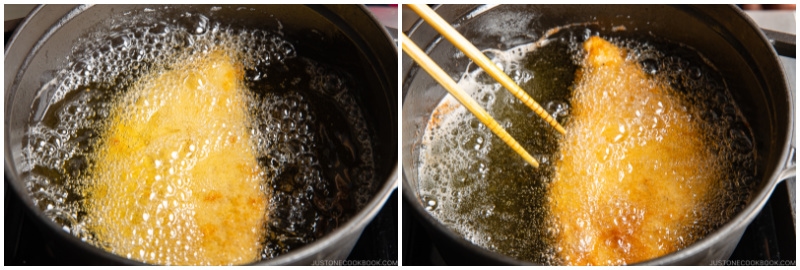
- Deep-fry until both sides are golden brown. Remove the cutlet from the oil and hold it vertically over the pot for a few seconds to drain the excess oil. Then, transfer it to a wire rack or paper towel-lined tray. If possible, keep it vertically to drain the excess oil.
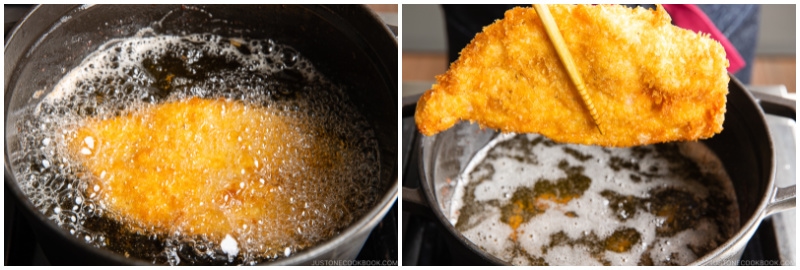
- Pick up all the crumbs in the oil with a fine-mesh skimmer before you add the next piece of chicken. If you don’t clean up these crumbs, they will burn and the oil will get darker. Make sure to keep the oil clean throughout deep-frying.
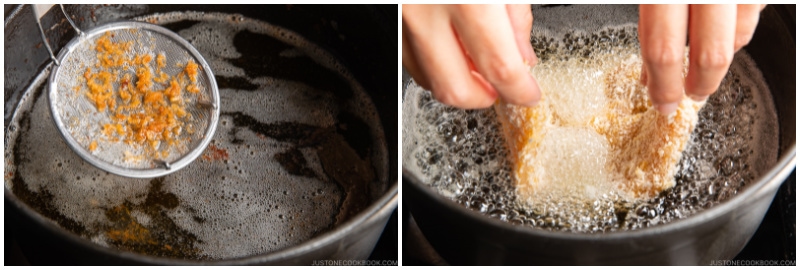
To Serve
- Cut the chicken into 1-inch (2.5 cm) pieces and serve it with tonkatsu sauce. Typically, chicken katsu is served with a side of shredded cabbage salad and salad dressing (I used my Japanese Sesame Dressing). I also add a few wedges of tomato for color.
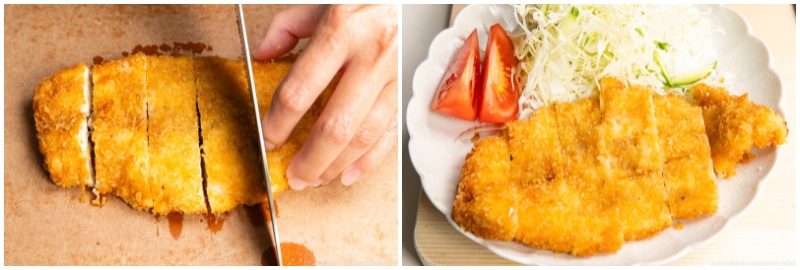
To Store
- You can store the leftovers in an airtight container and store them in the refrigerator for up to 2 days or in the freezer for up to a month. To reheat, bake at 350ºF (180ºC) for 15-20 minutes for chicken katsu that was thawed in the refrigerator overnight, or for 30 minutes if heating directly from frozen. Check that the inside is warm before serving.
From: Just One Cookbook
